
PENDLE
Precio de Pendle
$3,9920
+$0,075000
(+1,91 %)
Cambios en los precios de las últimas 24 horas

Riesgo de emisor de Pendle
Toma todas las precauciones posibles y ten en cuenta que este activo de cripto se ha clasificado como activo de cripto de alto riesgo. Este activo de cripto no tiene un emisor claramente identificado ni un equipo de proyecto establecido, lo que aumenta o podría aumentar su exposición a los riesgos del mercado, incluidos, entre otros, una volatilidad extrema, una baja liquidez o la posibilidad de verse envuelto en los abusos del mercado o la manipulación de precios. No existe absolutamente ninguna garantía de su valor, estabilidad y posibilidad de vender este activo de cripto a un precio preferido o deseado.
Aviso
El contenido social en esta página ("Contenido"), incluidos, entre otros, los tuits y las estadísticas proporcionadas por LunarCrush, proviene de terceros y se proporciona "tal cual" solo con fines informativos. OKX no garantiza la calidad o exactitud del Contenido, y el Contenido no representa las opiniones de OKX. No pretende proporcionar (i) asesoramiento o recomendación de inversión; (ii) una oferta o solicitud para comprar, vender o mantener activos digitales; o (iii) asesoramiento financiero, contable, legal o fiscal. Los activos digitales, incluidas las stablecoins y los NFT, implican un alto grado de riesgo y pueden fluctuar enormemente. El precio y el rendimiento de los activos digitales no están garantizados y pueden cambiar sin previo aviso.
OKX no proporciona recomendaciones de inversión o de activos. Debes considerar cuidadosamente si el trading o el holding de activos digitales es adecuado para ti a la luz de tu situación financiera. Consulta a tu asesor legal/fiscal/profesional de inversiones para preguntas sobre tus circunstancias específicas. Para obtener más información, consulta nuestros Términos de uso y Advertencia de riesgo Al usar el sitio web de terceros ("Sitio web de terceros" o "TWP"), aceptas que el uso del TWP estará sujeto a los términos de TWP. Salvo que se indique expresamente por escrito, OKX y sus afiliados ("OKX") no están asociados de ninguna manera con el propietario u operador del TPW. Aceptas que OKX no es responsable de ninguna pérdida, daño ni cualquier otra consecuencia generada por tu uso del TPW. Ten en cuenta que usar un TWP puede generar una pérdida o reducción de tus activos. El producto puede no estar disponible en todas las jurisdicciones.
OKX no proporciona recomendaciones de inversión o de activos. Debes considerar cuidadosamente si el trading o el holding de activos digitales es adecuado para ti a la luz de tu situación financiera. Consulta a tu asesor legal/fiscal/profesional de inversiones para preguntas sobre tus circunstancias específicas. Para obtener más información, consulta nuestros Términos de uso y Advertencia de riesgo Al usar el sitio web de terceros ("Sitio web de terceros" o "TWP"), aceptas que el uso del TWP estará sujeto a los términos de TWP. Salvo que se indique expresamente por escrito, OKX y sus afiliados ("OKX") no están asociados de ninguna manera con el propietario u operador del TPW. Aceptas que OKX no es responsable de ninguna pérdida, daño ni cualquier otra consecuencia generada por tu uso del TPW. Ten en cuenta que usar un TWP puede generar una pérdida o reducción de tus activos. El producto puede no estar disponible en todas las jurisdicciones.
Información de mercado de Pendle
Cap. de mercado
La cap. de mercado se calcula multiplicando la oferta circulante de una moneda por su precio más reciente.
Cap. de mercado = Oferta circulante × Último precio
Cap. de mercado = Oferta circulante × Último precio
Oferta circulante
La cantidad total de una moneda que está disponible públicamente en el mercado.
Clasificación de la capitalización de mercado
La clasificación de una moneda en términos de valor de capitalización de mercado.
Máximo histórico
El precio más alto que una moneda ha alcanzado en su historial de trading.
Mínimo histórico
El precio más bajo que una moneda ha alcanzado en su historial de trading.
Cap. de mercado
$660,99 M
Oferta circulante
164.713.067 PENDLE
58,50 % de
281.527.448 PENDLE
Clasificación de la capitalización de mercado
73
Auditorías

Última auditoría: 26 sept 2022, (UTC+8)
Alto 24 h
$4,2270
Bajo 24 h
$3,9010
Máximo histórico
$7,1420
-44,11 % (-$3,1500)
Última actualización: 7 dic 2024, (UTC+8)
Mínimo histórico
$1,8130
+120,18 % (+$2,1790)
Última actualización: 11 mar 2025, (UTC+8)
¿Qué opinas hoy sobre el precio de PENDLE?
Comparte lo que piensas usando el pulgar hacia arriba si crees que la moneda va a adoptar una tendencia alcista o hacia abajo si crees que va a adoptar una tendencia bajista.
Vota para ver los resultados
Feed de Pendle
El siguiente contenido proviene de .

Tindorr 🌯
¿Yap todo el día por las recompensas del leaderboard de Kaito?
Lo he intentado. Es un esfuerzo y la mayoría de las veces,
el ROI promedio simplemente no vale la pena.
Terminas pasando horas publicando, reaccionando y persiguiendo yaps…
mientras que las verdaderas oportunidades durante el ATH de BTC te pasan de largo.
He encontrado mejores retornos enfocándome en esto en su lugar:
> Apostar temprano en narrativas de $HYPE
> DCA en $ENA / $PENDLE mientras todos dormían en ello
> Largo en BTC, corto en tokens de baja calidad
> Tokens de listado en Corea para operaciones a corto plazo
> Estrategias de airdrop con uso real del producto
> Rendimiento en stablecoins/juegos de mercado monetario como $EUL
Algunas campañas de yapper sacan a la luz buenos proyectos.
Pero la mayoría de las veces? es solo contenido spam.
Si lo estás haciendo bien en el leaderboard, felicidades. Pero alejarse ayuda a captar los movimientos reales también.
Saca el mejor provecho de tu tiempo.
Mostrar original
1,6 mil
6

Route 2 FI
Infinit Labs anunció recientemente su v2, la Economía DeFi Agentic, que ahora está disponible en una fase alfa privada.
Los creadores de estrategias DeFi pueden aprovechar un enjambre de agentes para convertir estrategias complejas en ejecuciones simples con un solo clic en cuestión de minutos. Piensa en la automatización de bucles de Pendle PTs y posiciones de agricultura delta-neutras.
A medida que el mercado se calienta y la liquidez comienza a fluir de nuevo, habrá muchas oportunidades, y este será el primer ciclo en el que tendremos herramientas impulsadas por IA como esta para capitalizar de manera más eficiente lo que esperamos que nos depare los próximos meses.
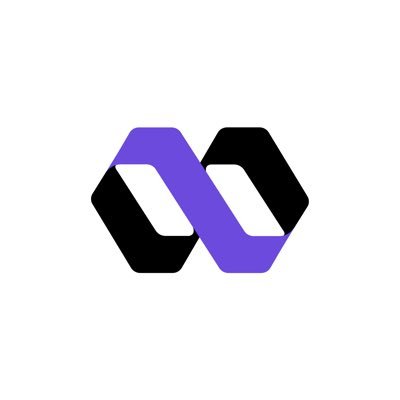
INFINIT
Inteligencia INFINIT (V1) + Economía DeFi Agentic (V2) = Viaje DeFi Completo
Investiga, decide y ejecuta. Todo en una sola aplicación.
V1: Inteligencia INFINIT — tu compañero personal DeFi que maneja la investigación y la ejecución.
V2: La Economía DeFi Agentic — creadores de estrategias, usuarios y agentes colaboran en un ecosistema transparente y monetizable. Estrategias DeFi de múltiples pasos completadas con un solo clic.
Desde la inteligencia personal hasta la coordinación completa del ecosistema. Todo bajo INFINIT.
👉 V1 está en vivo en y V2 está en alfa privada (más accesos se abrirán pronto).

14,36 mil
24

Route 2 FI
@INFINIT_Labs anunció recientemente su v2, la Economía DeFi Agente, que ahora está disponible en una fase alfa privada.
Los creadores de estrategias DeFi pueden aprovechar un enjambre de agentes para convertir estrategias complejas en ejecuciones simples con un solo clic en cuestión de minutos. Piensa en la automatización de bucles de PTs de Pendle y posiciones de agricultura delta-neutras.
A medida que el mercado se calienta y la liquidez comienza a fluir de nuevo, habrá muchas oportunidades, y este será el primer ciclo en el que tendremos herramientas impulsadas por IA como esta para capitalizar de manera más eficiente lo que esperamos que nos depare los próximos meses.

INFINIT
Inteligencia INFINIT (V1) + Economía DeFi Agentic (V2) = Viaje DeFi Completo
Investiga, decide y ejecuta. Todo en una sola aplicación.
V1: Inteligencia INFINIT — tu compañero personal DeFi que maneja la investigación y la ejecución.
V2: La Economía DeFi Agentic — creadores de estrategias, usuarios y agentes colaboran en un ecosistema transparente y monetizable. Estrategias DeFi de múltiples pasos completadas con un solo clic.
Desde la inteligencia personal hasta la coordinación completa del ecosistema. Todo bajo INFINIT.
👉 V1 está en vivo en y V2 está en alfa privada (más accesos se abrirán pronto).

742
1

yohaan.sonic
Si este es el caso, todos los YTs en @pendle_fi (Sonic) están criminalmente subvalorados.

Trevee (Prev. Rings Protocol)
Un saludo a todos los que creyeron en el lanzamiento. 🤝
@SonicLabs La Temporada 1 está llegando a su fin, y ha sido jugosa (acabamos de procesar los números finales sobre Trevee Gems). 👀
¿Un giro divertido?
A pesar de que la Temporada 2 se perfila para ser igual de incentivada, hemos visto algunas salidas significativas.
¿El resultado? 👇
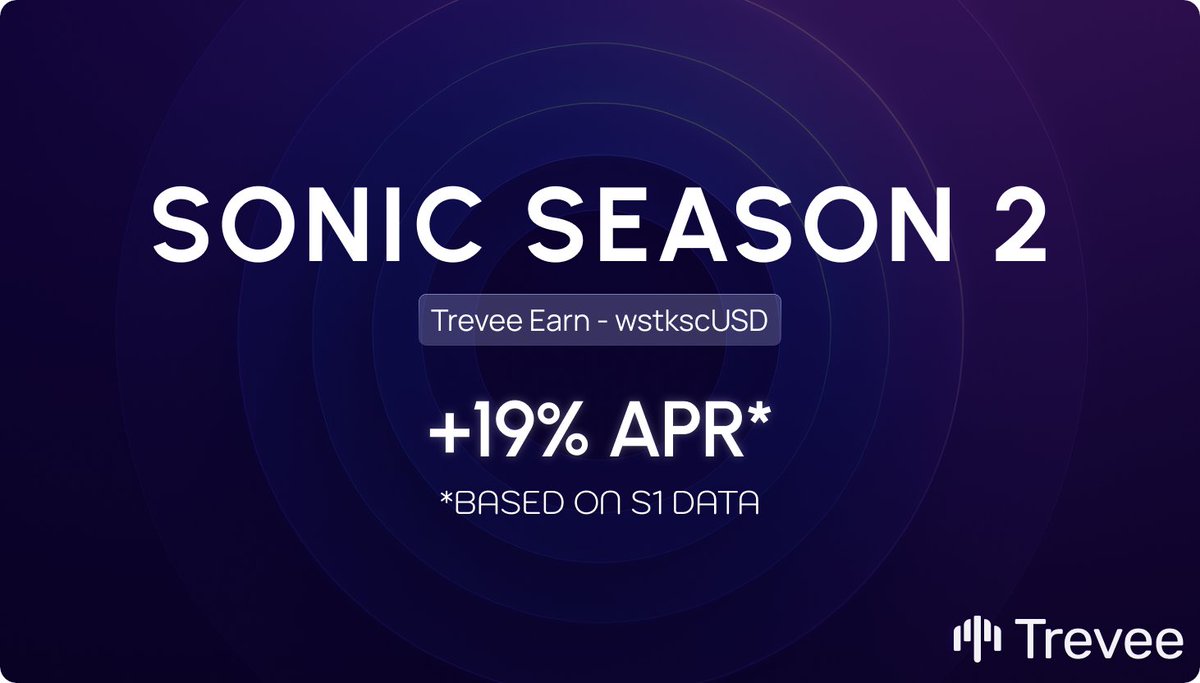
1,97 mil
23
Convertir USD a PENDLE


Rendimiento del precio de Pendle en USD
El precio actual de Pendle es $3,9920. En las últimas 24 horas, Pendle ha aumentó un +1,91 %. Actualmente, tiene una oferta circulante de 164.713.067 PENDLE y una oferta máxima de 281.527.448 PENDLE, lo que le proporciona una capitalización de mercado totalmente diluida de $660,99 M. En este momento, la moneda Pendle ocupa la posición 73 en la clasificación de capitalización de mercado. El precio de Pendle/USD se actualiza en tiempo real.
Hoy
+$0,075000
+1,91 %
7 días
+$0,61000
+18,03 %
30 días
+$0,26500
+7,11 %
3 meses
+$0,94200
+30,88 %
Conversiones populares de Pendle
Última actualización: 15/07/2025, 07:17
| 1 PENDLE a USD | 4,0130 $ |
| 1 PENDLE a EUR | 3,4405 € |
| 1 PENDLE a PHP | 227,35 ₱ |
| 1 PENDLE a IDR | 65.283,88 Rp |
| 1 PENDLE a GBP | 2,9877 £ |
| 1 PENDLE a CAD | 5,4990 $ |
| 1 PENDLE a AED | 14,7397 AED |
| 1 PENDLE a VND | 104.832,8 ₫ |
Sobre Pendle (PENDLE)
La calificación proporcionada es una calificación agregada recogida por OKX de las fuentes proporcionadas y es solo para fines informativos. OKX no garantiza la calidad o exactitud de las calificaciones. No pretende proporcionar (i) asesoramiento o recomendación de inversión; (ii) una oferta o solicitud para comprar, vender o mantener activos digitales; ni (iii) asesoramiento financiero, contable, legal o fiscal. Los activos digitales, incluidas las stablecoins y las NFT, entrañan un alto grado de riesgo, pueden fluctuar enormemente e incluso perder su valor. El precio y el rendimiento de los activos digitales no están garantizados y pueden cambiar sin previo aviso. Tus activos digitales no están cubiertos por un seguro contra posibles pérdidas. Los rendimientos históricos no son indicativos de rendimientos futuros. OKX no garantiza ningún rendimiento, reembolso de capital o intereses. OKX no proporciona recomendaciones de inversión o de activos. Debes considerar cuidadosamente si el trading o la posesión de activos digitales es adecuado para ti a la luz de tu situación financiera. Consulta con tu asesor legal/fiscal/profesional de la inversión si tienes preguntas acerca de tus circunstancias específicas.
Mostrar más
- Sitio web oficial
- White paper
- Github
- Explorador de bloques
Sobre los sitios web de terceros
Sobre los sitios web de terceros
Al usar el sitio web de terceros ("Sitio web de terceros" o "TWP"), aceptas que el uso del TWP estará sujeto a los términos de TWP. Salvo que se indique expresamente por escrito, OKX y sus afiliados ("OKX") no están asociados de ninguna manera con el propietario u operador del TPW. Aceptas que OKX no es responsable de ninguna pérdida, daño ni cualquier otra consecuencia generada por tu uso del TPW. Ten en cuenta que usar un TWP puede generar una pérdida o reducción de tus activos.
Preguntas frecuentes sobre Pendle
¿Cuál es el valor actual de 1 Pendle?
Actualmente, un Pendle vale $3,9920. Para obtener respuestas e información sobre las acciones de precios de Pendle, estás en el lugar correcto. Explora los últimos gráficos de Pendle y opera de manera responsable con OKX.
¿Qué es una criptomoneda?
Las criptomonedas, como Pendle, son activos digitales que operan sobre libros mayores (ledger) públicos llamados blockchains. Obtén más información sobre las monedas y tokens que se ofrecen en OKX y sus distintas características, como su precio y gráficos en tiempo real.
¿Cuándo se inventaron las criptomonedas?
A raíz de la crisis financiera de 2008, creció el interés por las finanzas descentralizadas. Bitcoin ofrecía una solución novedosa al ser un activo digital seguro en una red descentralizada. Desde entonces, también se han creado muchos otros tokens como Pendle.
¿Va a subir el precio de Pendle hoy?
Consulta nuestra página de predicción de precios de Pendle para ver los pronósticos de precios y determinar tus objetivos de valor.
Declaración de GEI
Las regulaciones ESG (Environmental, Social and Governance) para los criptoactivos tienen como objetivo abordar su impacto ambiental (por ejemplo, la minería intensiva en energía), promover la transparencia y garantizar prácticas éticas de gobernanza para alinear la industria de las criptomonedas con objetivos más amplios de sostenibilidad y sociales. Estas regulaciones fomentan el cumplimiento de normas que mitigan los riesgos y promueven la confianza en los activos digitales.
Detalles del activo
Nombre
OKCoin Europe Ltd
Identificador de entidad legal relevante
54930069NLWEIGLHXU42
Nombre del criptoactivo
Pendle
Mecanismo de consenso
Pendle is present on the following networks: Arbitrum, Binance Smart Chain, Ethereum.
Arbitrum is a Layer 2 solution on top of Ethereum that uses Optimistic Rollups to enhance scalability and reduce transaction costs. It assumes that transactions are valid by default and only verifies them if there's a challenge (optimistic): Core Components: • Sequencer: Orders transactions and creates batches for processing. • Bridge: Facilitates asset transfers between Arbitrum and Ethereum. • Fraud Proofs: Protect against invalid transactions through an interactive verification process. Verification Process: 1. Transaction Submission: Users submit transactions to the Arbitrum Sequencer, which orders and batches them. 2. State Commitment: These batches are submitted to Ethereum with a state commitment. 3. Challenge Period: Validators have a specific period to challenge the state if they suspect fraud. 4. Dispute Resolution: If a challenge occurs, the dispute is resolved through an iterative process to identify the fraudulent transaction. The final operation is executed on Ethereum to determine the correct state. 5. Rollback and Penalties: If fraud is proven, the state is rolled back, and the dishonest party is penalized. Security and Efficiency: The combination of the Sequencer, bridge, and interactive fraud proofs ensures that the system remains secure and efficient. By minimizing on-chain data and leveraging off-chain computations, Arbitrum can provide high throughput and low fees.
Binance Smart Chain (BSC) uses a hybrid consensus mechanism called Proof of Staked Authority (PoSA), which combines elements of Delegated Proof of Stake (DPoS) and Proof of Authority (PoA). This method ensures fast block times and low fees while maintaining a level of decentralization and security. Core Components 1. Validators (so-called “Cabinet Members”): Validators on BSC are responsible for producing new blocks, validating transactions, and maintaining the network’s security. To become a validator, an entity must stake a significant amount of BNB (Binance Coin). Validators are selected through staking and voting by token holders. There are 21 active validators at any given time, rotating to ensure decentralization and security. 2. Delegators: Token holders who do not wish to run validator nodes can delegate their BNB tokens to validators. This delegation helps validators increase their stake and improves their chances of being selected to produce blocks. Delegators earn a share of the rewards that validators receive, incentivizing broad participation in network security. 3. Candidates: Candidates are nodes that have staked the required amount of BNB and are in the pool waiting to become validators. They are essentially potential validators who are not currently active but can be elected to the validator set through community voting. Candidates play a crucial role in ensuring there is always a sufficient pool of nodes ready to take on validation tasks, thus maintaining network resilience and decentralization. Consensus Process 4. Validator Selection: Validators are chosen based on the amount of BNB staked and votes received from delegators. The more BNB staked and votes received, the higher the chance of being selected to validate transactions and produce new blocks. The selection process involves both the current validators and the pool of candidates, ensuring a dynamic and secure rotation of nodes. 5. Block Production: The selected validators take turns producing blocks in a PoA-like manner, ensuring that blocks are generated quickly and efficiently. Validators validate transactions, add them to new blocks, and broadcast these blocks to the network. 6. Transaction Finality: BSC achieves fast block times of around 3 seconds and quick transaction finality. This is achieved through the efficient PoSA mechanism that allows validators to rapidly reach consensus. Security and Economic Incentives 7. Staking: Validators are required to stake a substantial amount of BNB, which acts as collateral to ensure their honest behavior. This staked amount can be slashed if validators act maliciously. Staking incentivizes validators to act in the network's best interest to avoid losing their staked BNB. 8. Delegation and Rewards: Delegators earn rewards proportional to their stake in validators. This incentivizes them to choose reliable validators and participate in the network’s security. Validators and delegators share transaction fees as rewards, which provides continuous economic incentives to maintain network security and performance. 9. Transaction Fees: BSC employs low transaction fees, paid in BNB, making it cost-effective for users. These fees are collected by validators as part of their rewards, further incentivizing them to validate transactions accurately and efficiently.
The crypto-asset's Proof-of-Stake (PoS) consensus mechanism, introduced with The Merge in 2022, replaces mining with validator staking. Validators must stake at least 32 ETH every block a validator is randomly chosen to propose the next block. Once proposed the other validators verify the blocks integrity. The network operates on a slot and epoch system, where a new block is proposed every 12 seconds, and finalization occurs after two epochs (~12.8 minutes) using Casper-FFG. The Beacon Chain coordinates validators, while the fork-choice rule (LMD-GHOST) ensures the chain follows the heaviest accumulated validator votes. Validators earn rewards for proposing and verifying blocks, but face slashing for malicious behavior or inactivity. PoS aims to improve energy efficiency, security, and scalability, with future upgrades like Proto-Danksharding enhancing transaction efficiency.
Mecanismos de incentivos y comisiones aplicables
Pendle is present on the following networks: Arbitrum, Binance Smart Chain, Ethereum.
Arbitrum One, a Layer 2 scaling solution for Ethereum, employs several incentive mechanisms to ensure the security and integrity of transactions on its network. The key mechanisms include: 1. Validators and Sequencers: o Sequencers are responsible for ordering transactions and creating batches that are processed off-chain. They play a critical role in maintaining the efficiency and throughput of the network. o Validators monitor the sequencers' actions and ensure that transactions are processed correctly. Validators verify the state transitions and ensure that no invalid transactions are included in the batches. 2. Fraud Proofs: o Assumption of Validity: Transactions processed off-chain are assumed to be valid. This allows for quick transaction finality and high throughput. o Challenge Period: There is a predefined period during which anyone can challenge the validity of a transaction by submitting a fraud proof. This mechanism acts as a deterrent against malicious behavior. o Dispute Resolution: If a challenge is raised, an interactive verification process is initiated to pinpoint the exact step where fraud occurred. If the challenge is valid, the fraudulent transaction is reverted, and the dishonest actor is penalized. 3. Economic Incentives: o Rewards for Honest Behavior: Participants in the network, such as validators and sequencers, are incentivized through rewards for performing their duties honestly and efficiently. These rewards come from transaction fees and potentially other protocol incentives. o Penalties for Malicious Behavior: Participants who engage in dishonest behavior or submit invalid transactions are penalized. This can include slashing of staked tokens or other forms of economic penalties, which serve to discourage malicious actions. Fees on the Arbitrum One Blockchain 1. Transaction Fees: o Layer 2 Fees: Users pay fees for transactions processed on the Layer 2 network. These fees are typically lower than Ethereum mainnet fees due to the reduced computational load on the main chain. o Arbitrum Transaction Fee: A fee is charged for each transaction processed by the sequencer. This fee covers the cost of processing the transaction and ensuring its inclusion in a batch. 2. L1 Data Fees: o Posting Batches to Ethereum: Periodically, the state updates from the Layer 2 transactions are posted to the Ethereum mainnet as calldata. This involves a fee, known as the L1 data fee, which accounts for the gas required to publish these state updates on Ethereum. o Cost Sharing: Because transactions are batched, the fixed costs of posting state updates to Ethereum are spread across multiple transactions, making it more cost-effective for users.
Binance Smart Chain (BSC) uses the Proof of Staked Authority (PoSA) consensus mechanism to ensure network security and incentivize participation from validators and delegators. Incentive Mechanisms 1. Validators: Staking Rewards: Validators must stake a significant amount of BNB to participate in the consensus process. They earn rewards in the form of transaction fees and block rewards. Selection Process: Validators are selected based on the amount of BNB staked and the votes received from delegators. The more BNB staked and votes received, the higher the chances of being selected to validate transactions and produce new blocks. 2. Delegators: Delegated Staking: Token holders can delegate their BNB to validators. This delegation increases the validator's total stake and improves their chances of being selected to produce blocks. Shared Rewards: Delegators earn a portion of the rewards that validators receive. This incentivizes token holders to participate in the network’s security and decentralization by choosing reliable validators. 3. Candidates: Pool of Potential Validators: Candidates are nodes that have staked the required amount of BNB and are waiting to become active validators. They ensure that there is always a sufficient pool of nodes ready to take on validation tasks, maintaining network resilience. 4. Economic Security: Slashing: Validators can be penalized for malicious behavior or failure to perform their duties. Penalties include slashing a portion of their staked tokens, ensuring that validators act in the best interest of the network. Opportunity Cost: Staking requires validators and delegators to lock up their BNB tokens, providing an economic incentive to act honestly to avoid losing their staked assets. Fees on the Binance Smart Chain 5. Transaction Fees: Low Fees: BSC is known for its low transaction fees compared to other blockchain networks. These fees are paid in BNB and are essential for maintaining network operations and compensating validators. Dynamic Fee Structure: Transaction fees can vary based on network congestion and the complexity of the transactions. However, BSC ensures that fees remain significantly lower than those on the Ethereum mainnet. 6. Block Rewards: Incentivizing Validators: Validators earn block rewards in addition to transaction fees. These rewards are distributed to validators for their role in maintaining the network and processing transactions. 7. Cross-Chain Fees: Interoperability Costs: BSC supports cross-chain compatibility, allowing assets to be transferred between Binance Chain and Binance Smart Chain. These cross-chain operations incur minimal fees, facilitating seamless asset transfers and improving user experience. 8. Smart Contract Fees: Deployment and Execution Costs: Deploying and interacting with smart contracts on BSC involves paying fees based on the computational resources required. These fees are also paid in BNB and are designed to be cost-effective, encouraging developers to build on the BSC platform.
The crypto-asset's PoS system secures transactions through validator incentives and economic penalties. Validators stake at least 32 ETH and earn rewards for proposing blocks, attesting to valid ones, and participating in sync committees. Rewards are paid in newly issued ETH and transaction fees. Under EIP-1559, transaction fees consist of a base fee, which is burned to reduce supply, and an optional priority fee (tip) paid to validators. Validators face slashing if they act maliciously and incur penalties for inactivity. This system aims to increase security by aligning incentives while making the crypto-asset's fee structure more predictable and deflationary during high network activity.
Comienzo del periodo incluido en la declaración
2024-07-13
Fin del periodo incluido en la declaración
2025-07-13
Informe energético
Consumo de energía
3136.76270 (kWh/a)
Fuentes y metodologías de consumo de energía
The energy consumption of this asset is aggregated across multiple components:
To determine the energy consumption of a token, the energy consumption of the network(s) arbitrum, binance_smart_chain, ethereum is calculated first. For the energy consumption of the token, a fraction of the energy consumption of the network is attributed to the token, which is determined based on the activity of the crypto-asset within the network. When calculating the energy consumption, the Functionally Fungible Group Digital Token Identifier (FFG DTI) is used - if available - to determine all implementations of the asset in scope. The mappings are updated regularly, based on data of the Digital Token Identifier Foundation. The information regarding the hardware used and the number of participants in the network is based on assumptions that are verified with best effort using empirical data. In general, participants are assumed to be largely economically rational. As a precautionary principle, we make assumptions on the conservative side when in doubt, i.e. making higher estimates for the adverse impacts.
Convertir USD a PENDLE




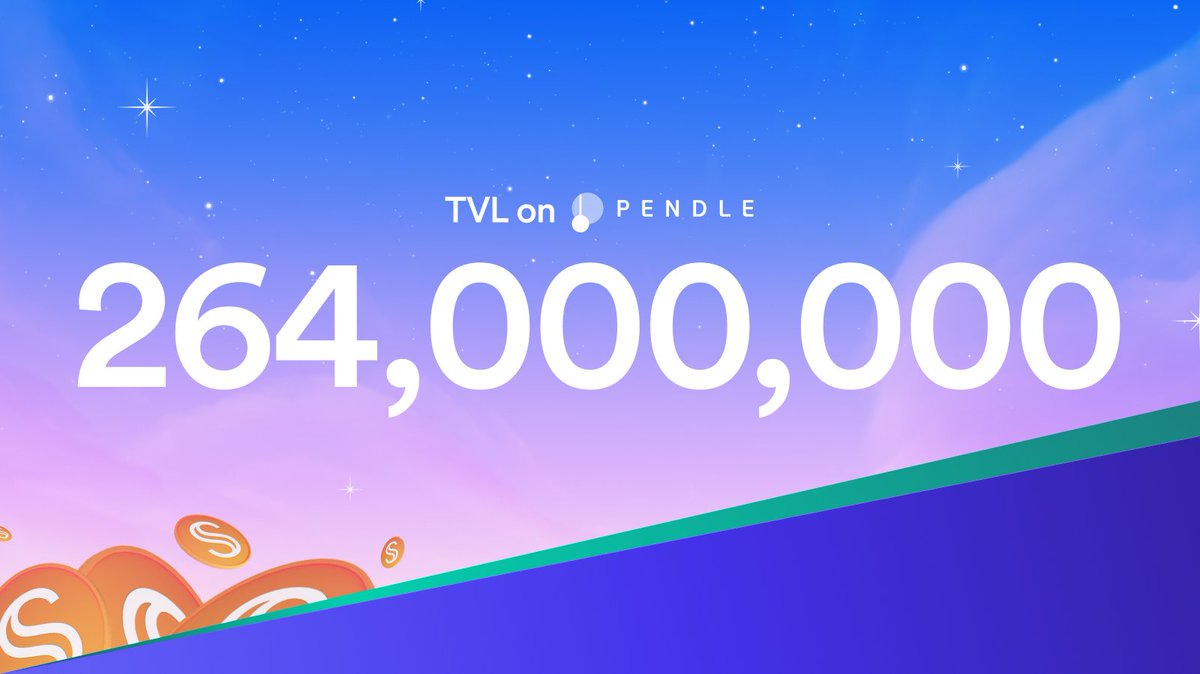
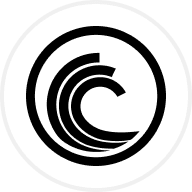

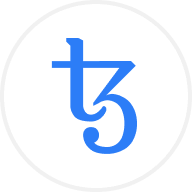








Sociales